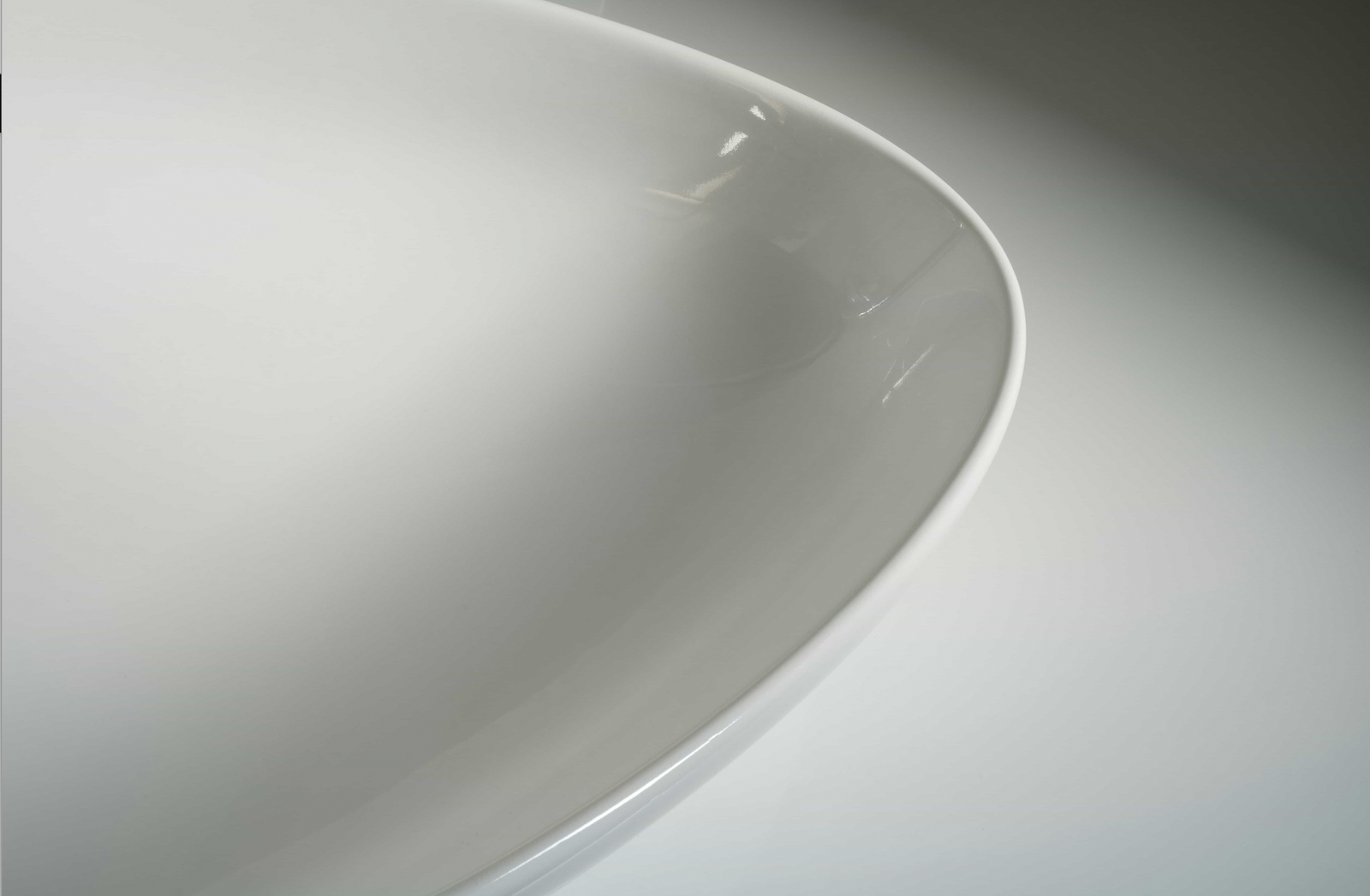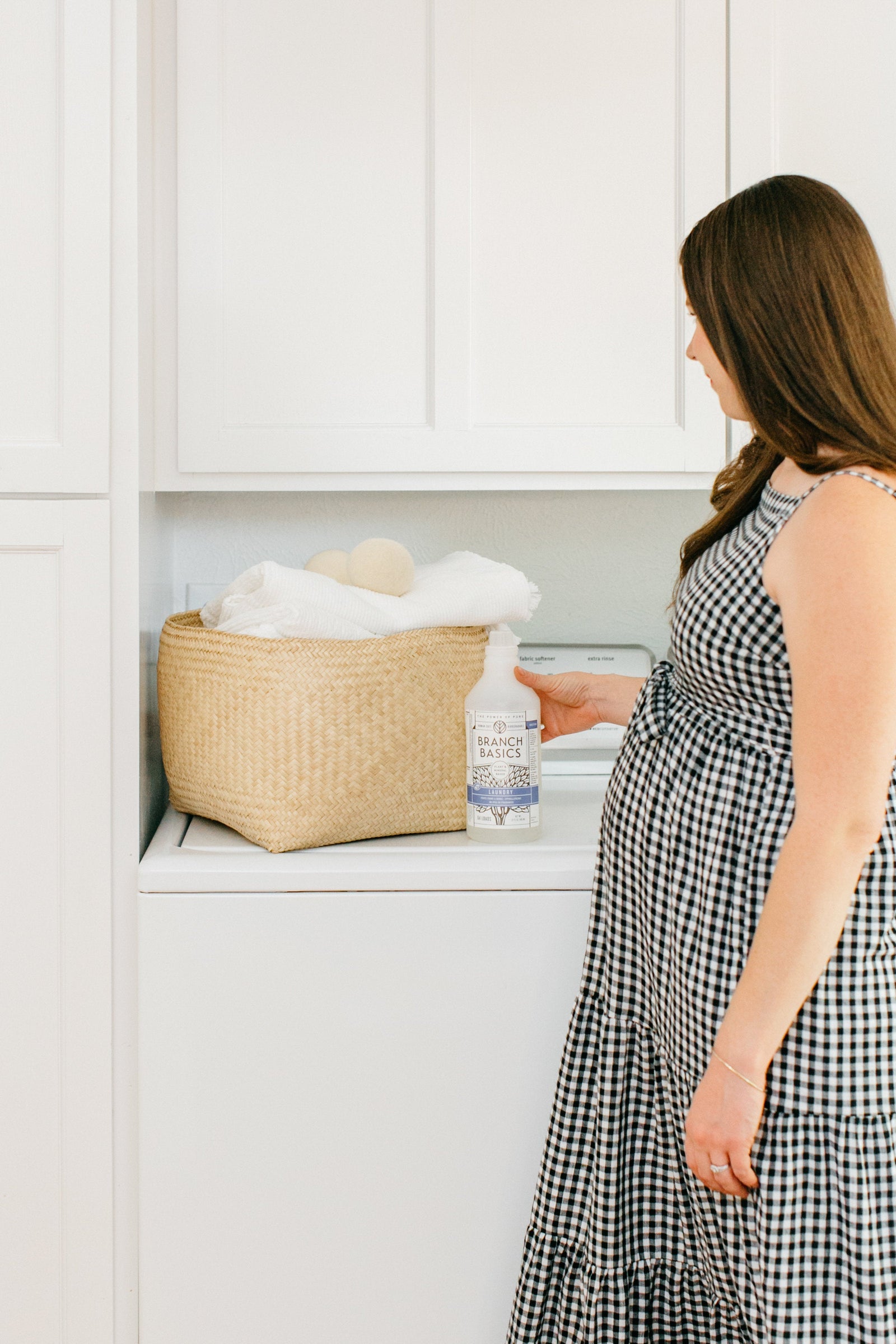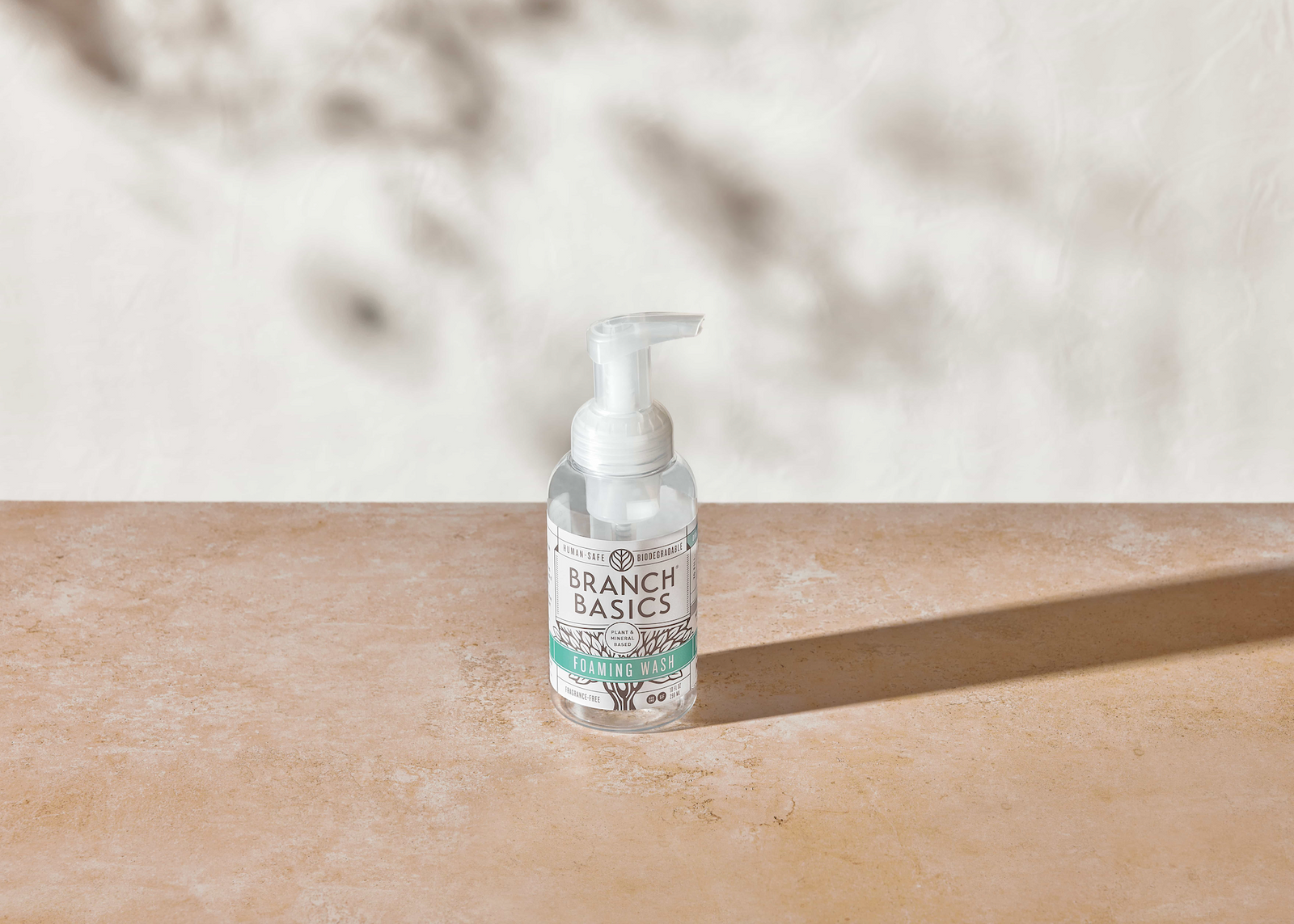How to Clean a Porcelain Sink Naturally

Looking for ways to clean your porcelain sink naturally?
Porcelain sinks are sleek, affordable, are beautiful to look at, making them a popular fixture in homes new and old.
The only downside is, they tend to stain and scratch easily, especially in high-traffic areas like family kitchens and bathrooms.
The good news is, porcelain is also very forgiving, especially if it's cared for using human-safe cleaning products.
In this article, you’ll learn how to clean, de-stain, and disinfect porcelain sinks naturally using human-safe products and DIY solutions you already have in the cabinets and cupboards.
What is Porcelain?
Porcelain is a type of ceramic used to make various products such as kitchen and bathroom sinks, bone china, dental materials, and types of manufacturing equipment.
The word porcelain is derived from porcellana, which Marco Polo used to describe the pottery he saw in China, which he first brought to America in the 14th century.
There are several different types of porcelain used to make different products.
The exact composition varies from product-to-product, but they are all made with kaolin, a soft white clay that is combined with other ingredients like sand, quartz, and feldspar to create the end product.
Porcelain sinks also vary in composition and may be made of solid porcelain or porcelain enamel coating another material, such as steel or iron.
The big upsides to porcelain are it’s easy to clean, looks great, and is durable.
How Often Should I Wash Porcelain?
We recommend washing your porcelain sink at least once or twice a week, or more if it’s in a high traffic area.
Porcelain can become stained fairly quickly, and frequent cleaning or wipe-downs after spills and in between cleaning will help prevent that.
Get more advice and tips on how often to clean your bathroom in: How to Clean Your Bathroom Naturally with Branch Basics.
Products to Avoid When Cleaning Porcelain Sinks
When cleaning porcelain sinks there are two types of products to avoid:
#1: Highly abrasive products, such as harsh scouring agents or cleaning tools that can scratch or wear down the finish.
#2: Products that are toxic to humans and the environment and can even damage your sink over time.
Some examples include:
- Bleach: Although it is typically recommended for cleaning, removing stains, and disinfecting, chlorine bleach is highly toxic and responsible for thousands of poisonings every year. Its passive or active use has also been linked to lung damage, skin burns, organ damage, miscarriage, cancer, asthma, and a host of other conditions.
- Ammonia: This harsh cleaner can damage porcelain sinks if used in high concentrations. It’s also an environmental disaster, is corrosive to the mouth, lungs, and throat and has been linked to internal organ damage, respiratory distress and failure, and even death.
- Steel wool or abrasive cleaning tools: It can be tempting to use these to remove stains from your porcelain sink. However, these tools are too abrasive for porcelain and will end up scratching it and/or causing permanent damage.
- Antibacterial cleaners, like Lysol: Sinks do need to be disinfected regularly but NOT with toxic chemicals like Quats (ammonia compounds) that have been linked to reproductive toxicity, neurodevelopmental issues, inflammation, and proliferation of drug-resistant bacteria. They’re also extremely toxic to aquatic life.
- Abrasive cleaners: Like abrasive cleaning tools, highly abrasive cleaners will scratch up and damage your porcelain sink, leaving you with a bigger mess than you started with. We’ll discuss which mild abrasives are safe to use on porcelain next.
For more helpful details on ingredients to avoid in sink and other bathroom cleaners, see: How To Clean Your Bathroom Naturally With Branch Basics.
So, what should you clean your porcelain sink with? Let’s get into that now.
What You’ll Need
Cleaning your porcelain sink naturally is super easy and requires only a few simple tools and human-safe cleaning products.
Branch Basics Bathroom and Oxygen Boost are excellent human-safe cleaners for porcelain sinks because they’re free from synthetic chemicals and will not scratch the surface.
Branch Basics Starter Kits contain everything you need to make Bathroom solution (and All-Purpose, Streak-Free, Foaming Wash, Laundry, and more) using just one Concentrate plus Oxygen Boost which acts as a mild abrasive and natural bleach alternative.
Here’s what you’ll need to clean your porcelain sink naturally:
Materials:
- Microfiber cloth
- Non-abrasive sponge
- Natural scrub brush
- Spray bottle (if using DIY products)
Natural Cleaning Products
- Branch Basics Bathroom solution or a mild, natural soap like fragrance-free liquid castile soap
- Oxygen Boost or Baking Soda
- 3% Hydrogen Peroxide (brown bottle)
- Distilled White Vinegar or Lemon Juice
How to Clean a Porcelain Sink Naturally
The method for cleaning your porcelain sink naturally is similar to cleaning it with synthetic chemicals, except it’s fume-free and no-fuss!
Here, we’ll explain how to clean your bathroom or kitchen sink using Branch Basics or a DIY solution.
- Spray sink with Branch Basics Bathroom solution liberally. If scouring or extra cleaning power is required, add a sprinkle of Oxygen Boost.
- Let sit for 30 seconds to a couple of minutes, and scrub clean!
Follow the same method using your favorite DIY bathroom cleaner, such as homemade baking soda soft scrub, vinegar, or peroxide.
How to Get Deeper Stains Out of Porcelain
If the basic cleaning method isn’t enough to remove stains, follow these steps to revitalize your porcelain sink; no synthetic chemicals required!
What You’ll Need:
- Branch Basics Bathroom or your favorite DIY option
- Oxygen Boost or Baking Soda
- A non-abrasive sponge or microfiber cloth
Human-Safe Porcelain Sink Stain-Removal Procedure:
- Spray sink with Branch Basics Bathroom solution.
- Sprinkle Oxygen Boost all around.
- Spray again with Branch Basics Bathroom solution to wet.
- Let sit for 1-5 minutes, and scrub clean.
Oxygen Boost contains just two ingredients, sodium percarbonate (aka: oxygen bleach) and baking soda (sodium bicarbonate), making it double-trouble for pesky stains.
Sodium percarbonate is also a natural disinfectant when activated with warm water.
Learn more in: The Power of Sodium Percarbonate for Cleaning.
Baking soda or a homemade baking soda soft scrub are excellent DIY options that are safe to use on porcelain.
For Rust Stains:
- Use a small amount of distilled white vinegar, or lemon juice directly on the stain.
- Let sit for 5-30 minutes, and scrub clean.
Looking for a better scrub brush? Check out our Natural Brush to complete your kit.
How to Disinfect Porcelain Sinks Without Bleach or Synthetic Chemicals
We aren’t big on over-sanitizing around here, especially with synthetic chemicals.
However, sinks—which can be a hotbed of human and food-based germs especially if someone in the family is sick—are a notable exception.
Fortunately, that doesn’t have to mean reaching for toxic bleach or Lysol.
Here’s how to disinfect your porcelain sink safely and effectively using human-safe products.
What You’ll Need:
- Branch Basics Bathroom or your favorite DIY option
- A non-abrasive sponge or microfiber cloth
- 3% Hydrogen Peroxide
- Distilled White Vinegar
- Optional: Trigger sprayers for peroxide and vinegar
Human-Safe Sink Disinfecting Procedure:
- Follow the basic sink cleaning procedure above to remove germs, dirt, and grime before sanitizing. This is an important step as dirt and grime can interfere with a disinfectant's ability to kill germs effectively.
- Spray a few sprays of vinegar or peroxide on the surface and let the one product dwell for 5-10 minutes. Do not use them simultaneously, as this could create harmful fumes.
- Wipe thoroughly.
- Then spray the other product on the same surface. Let dwell and wipe thoroughly.
Never EVER use peroxide and vinegar at the same time or store in the same bottle as it can create noxious fumes.
Get the full story on natural disinfecting in: How to Naturally Disinfect Surfaces: [Complete Guide].
Wondering why hydrogen peroxide is considered non-toxic? Learn all about it in: How To Use Hydrogen Peroxide for Non-Toxic Cleaning, Disinfecting, And More.
Get Started With Branch Basics
As you can see, cleaning your porcelain sinks does not require toxic synthetic cleaners and can be accomplished with very little time and effort.
The key takeaways are:
- Clean frequently to prevent stains and build-up.
- Avoid using harsh abrasive cleaners, toxic products, or tools.
- Opt for human-safe cleaners, like Branch Basics or the DIY options listed here, and natural bleach alternatives, like Oxygen Boost or Baking Soda.
Interested in trying Branch Basics for your porcelain sinks (and beyond)?
Check out Branch Basics Premium Starter Kit, which has everything you need to make your own human-safe cleaners, including All-Purpose, Bathroom, and Streak-Free plus Foaming Wash (for hands, makeup removal, and more), and Laundry Soap, plus a full-size Oxygen Boost.
If this article has inspired you to toss your synthetic chemical-based sink or bathroom cleaning products, please see How to Dispose Cleaning Products Safely (And Legally) for instructions on safe and legal disposal.
Finally, for more natural bathroom and kitchen cleaning tips, check out:

Marilee Nelson
Marilee Nelson is an Environmental Toxins expert who has spent nearly 30 years advocating for the chemically-sensitive and chronically-ill. She is a Board Certified Nutritionist, Certified Bau-Biologist and Bau-Biology Inspector and specializes in Food As Medicine. She has helped thousands of families and individuals identify, heal and recover from toxic exposures and is on a mission to revolutionize the way American families view their health.








